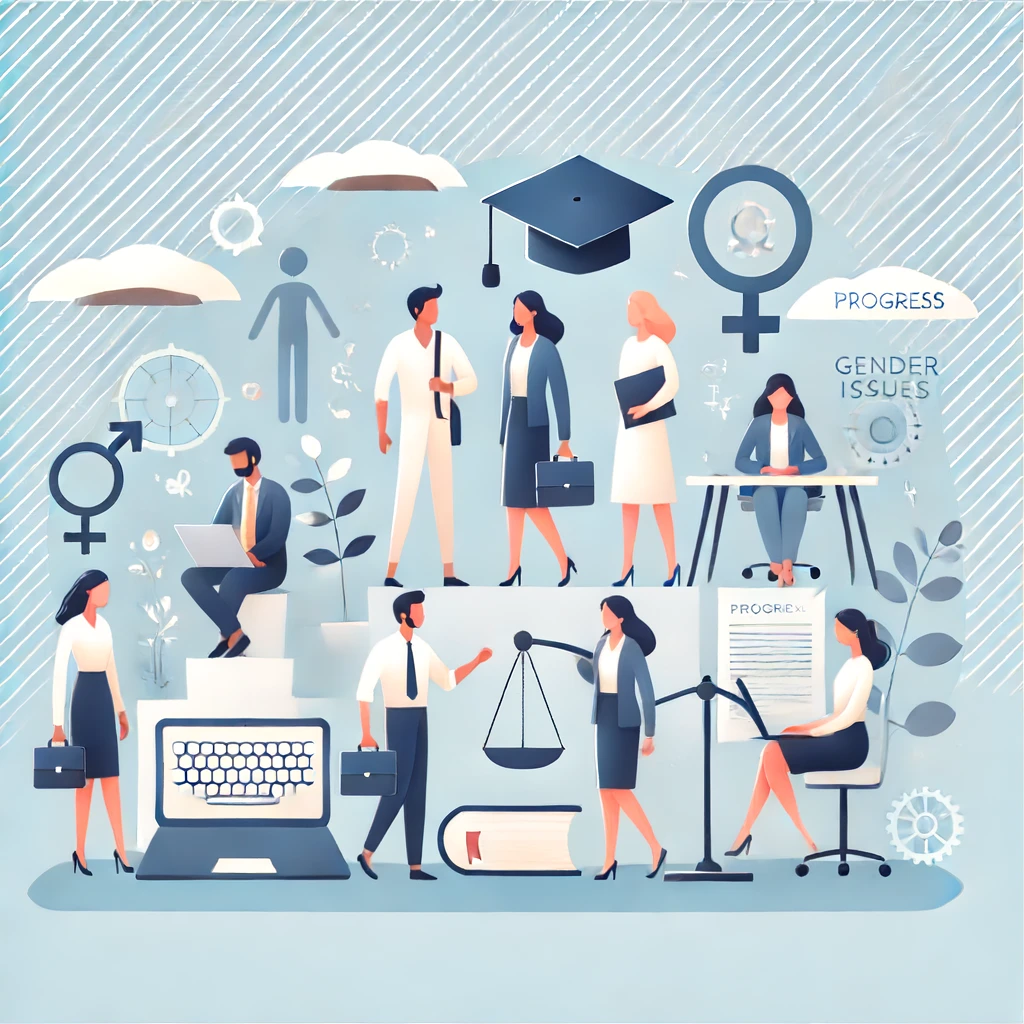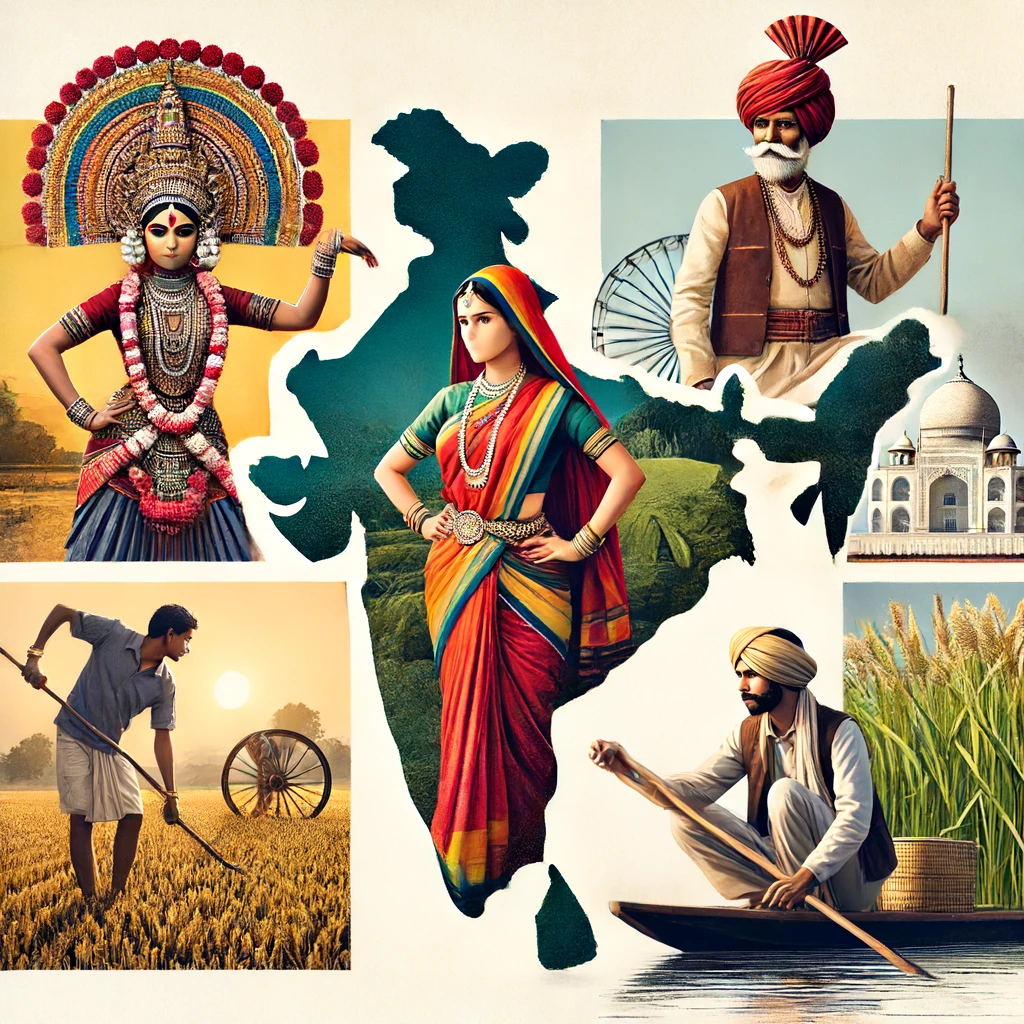India, being a vast and populous country, holds gender issues that many countries around the world have faced in similar manners. This is particularly challenging because it holds different socio-economic strands, normal cultural happenings, and historical contexts that are unique to the country. Key matters of concern under the gender issue in India are education and employment, legal rights, health safety, etc. The progress and hurdles regarding these issues call for a look into the same in this paper.
- Women in India, on average, earn less than men for the same work sign of a large gender wage gap.
- According to UNESCO, one in three of the world’s child brides live in India.
- India stood at rank 122 out of 191 countries with a score of 0.490 in the Gender Inequality Index 2021.
Education for Women
Education is a right, but it has remained a distant dream for many women in India. As per the Census data, much has been achieved in increasing female literacy—from 53.67% in 2001 to 65.46% in 2011. Government initiatives like ‘Beti Bachao Beti Padhao’ have brought improvement in the enrollment rates. In fact, poverty, early marriage, and procreation, as well as general attitudes toward women and girls about education. These have been major reasons for high dropout rates, especially at the secondary levels. It is a matter not only of scaling up enrolment but also of ensuring that quality education is retained.
Workforce Participation
Women comprise half of the population, and yet their workforce participation has been declining in India. According to the Periodic Labour Force Survey, this declined from 37% in 2004-05 to 18% in 2020. There are various factors explaining such a decline: lack of access to safe and secure work environments, social norms that uphold women’s roles as caregivers, and general unavailability of jobs where women would be the main employees. Also, the wage disparity between men and women is still one of the important issues whereby women are paid much less compared to men for the same work.

Legal Rights and Reforms
The Government of India has implemented several key legal reforms toward securing and protecting the rights of women and advancing the cause of gender equality. Prominent among these are the Dowry Prohibition Act, 1961; the Domestic Violence Act, 2005; and the Sexual Harassment of Women at Workplace (Prevention, Prohibition, and Redressal) Act, 2013. The government even enacted a Criminal Law Amendment Act, in 2013, after the Nirbhaya case, which amended the Indian Penal Code with more stringent punishment for sexual assault. These are important steps forward. However, the enforcement of all these laws remains spotty, and many women do not know their legal rights.
Health and Safety Issues
Women in India have to suffer from many health problems, such as high maternal mortality rates and a very minimal percentage of access to health facilities in rural areas. The different programs that have been put into place are Janani Suraksha Yojana and Mission Indradhanush. The initiative was on vaccination and improving health services related to maternal health. Safety is one of the major issues that women have to confront along with high rates of gender-based violence. Other projects developed to contribute to solving these safety problems, were the nationwide emergency response number 112 and different mobile safety apps.
Women in Leadership
Women have increased their presence in politics, academia, and the corporate world. Figures like Indra Nooyi, the former CEO of PepsiCo, and Nirmala Sitharaman, the first full-time female Finance Minister of India, stand as testimony to this fact. Despite that, the representation of women in positions of leadership remains low. It is generally because of deeply entrenched patriarchal norms and a general lack of support structures. While open to every policy incentive for encouraging more women into leadership, the change in society will continue to be a very important area of action.

Indian Government Initiatives to Promote Gender Equality
- Beti Bachao Beti Padhao (BBBP): Protect and promote survival to educate the girl child.
- Mahila Shakti Kendra (MSK): Empowering rural women with opportunities for skill development and employment.
- National Creche Scheme: Provides safe childcare centers for women to work without worrying about their children’s safety.
- Pradhan Mantri Matru Vandana Yojna: This scheme seeks to ensure maternity benefits to all pregnant. As well as lactating mothers to provide support for their health and well-being.
- Pradhan Mantri Awas Yojana: Ensures housing is registered in the names of women, promoting economic empowerment and security.
- Sukanya Samriddhi Yojna (SSY): This encourages the economic empowerment of the girl child through the opening of bank accounts that come with financial benefits.
- Gender Budgeting: Since 2005, in the Union Budget of India, allocations under various schemes have been made that are specifically aimed at welfare programs for women.
- Nirbhaya Fund Framework: Corpus fund, non-lapsable, aiming at enhancing the safety and security of women through various initiatives.
- One-Stop Centres (OSCs): Provision of integrated support services for women who are victims of violence. These include medical aid, legal aid, and counseling.
- The Constitution (106th Amendment) Act, 2023: Reserves one-third of all seats for women in Lok Sabha, State legislative assemblies, and the Legislative Assembly of Delhi, including those reserved for SCs and STs.
Conclusion
While there have been remarkable strides in overcoming gender issues, some big challenges remain. Government-related initiatives and NGOs in this respect have been of immense use. The depth of the cultural and structural impediments to achieving full gender equality calls for more concentrated efforts than have so far been expended. Critical analysis and sustained commitment to women’s empowerment will help to institute the transformative change required. Only through increased awareness, continuous legal reforms, and socioeconomic opportunities for women will a road to an equal society emerge.
| Gender Issues UPSC Notes |
| 1. Male and female genders are paid unequal pay for equal work- sure reflection of high gender wage gap. 2. Ranking of India in the Gender Inequality Index: 122 out of 191 countries in the year 2021 with a score of 0.490. 3. While progress has been made, as shown by growing female literacy rates, social attitudes, and early marriage issues continue to be problems; hence, the high dropout rate of women despite ‘Beti Bachao Beti Padhao’ and similar initiatives. 4. The female workforce participation has slumped from 37% in 2004-05 to 18% in 2020 because of societal norms, along with a lack of safe and suitable job opportunities. 5. Legal reforms like the Dowry Prohibition Act and Domestic Violence Act have been established, but these are sporadically enforced, and most women remain unaware of their rights. 6. Certain schemes relating to the health of women, such as Janani Suraksha Yojana and Mission Indradhanush, exist, but high maternal mortality and violence against women remain grave challenges. 7. There are several schemes, namely Beti Bachao Beti Padhao, Mahila Shakti Kendra, and Pradhan Mantri Matru Vandana Yojna, which aim to achieve better equality with the help of support services of different natures provided to women. |



